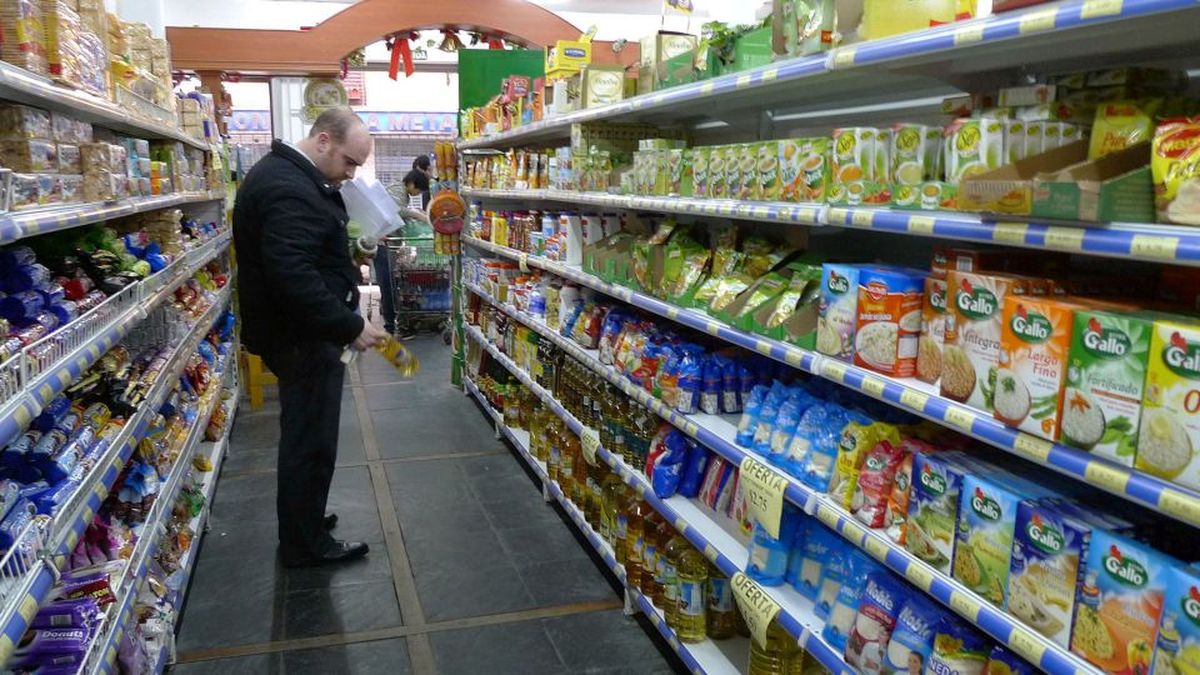The inflation data from the National Institute of Statistics and Census (INDEC) for August was released and it was 4.2%, above the figure for July (4%) and the market’s forecasts, which expected it to start at 3. But this data measures the rise in prices in pesos and our country is in fact bimonetary, so the market also follows the evolution of this index in dollars and the verdict is that Argentina is expensive in US currency.
It turns out that, when calculating the increase in prices, measured at the blue dollar rate, a much higher increase was recorded than that recorded by the CPI. In figures, August inflation was 10% in blue dollars and not only exceeds the 6.7% of July, but also ranks as the second highest of the year, only behind the remarkable 31% recorded in February in dollar terms.
This happens because the rise in prices in local currency and the fall in the parallel dollar ratewhich in August was 5.4% in its quotation. Furthermore, despite the authorities’ wishes, the restrictions are maintained, and the economy remains as closed as before, in addition to being in recession. There is no labor flexibility or sustainable fiscal balance, while the collection falls and depends on temporary taxes. Well, it is enough to go to the supermarket to see how the consumer basket of an average Argentine has risen in dollars.
How to measure inflation in dollars
For the economist Federico Glustein“The first thing that is analyzed is that the official dollar appreciates monthly with a monthly inflation of 4% compared to a crawling peg of 2% with parallel currencies that reduced their nominal value.”
In dialogue with Scope He points out that there is therefore inflation in dollars, which makes prices in that currency more expensive. “This discourages tourism to a certain extent because it makes it more expensive and the gap between the blue and official currencies does not cover the dollarized costs.” And he warns that, so much so, that vacation accommodations are more expensive than abroad and food is aligning, “obviously with an abysmal salary difference“.
Glustein recalls that a year ago Argentina was cheap at the parallel exchange rate and expensive at the official exchange rate, with 236% year-on-year inflation, while now “We are already expensive in both segments“.
The shortage of dollars, a local problem
It is worth mentioning that the Central Bank (BCRA) faces difficulties in maintaining constant purchases in hard currencywhich has led to the promotion of mechanisms such as money laundering, which is the catalyst that the Government uses to obtain greenbacks.
One of the problems lies in the dynamics of inbound tourism, since the economy will have problems generating dollars given that Fewer tourists arrive because we are more expensive in foreign currencyThis will likely raise the costs of local tourism, comparing it unfavorably with destinations such as Brazil or Miami.
Expensive in dollars: according to the Big Mac Index
It is worth remembering that This month’s Big Mac index prepared by The Economist revealed an important aspect of how expensive Argentina is In dollars: it is the second most expensive country in Latin America to buy the famous McDonald’s hamburger, behind Uruguay. In other words, the nation has the second most overvalued currency in the world against the dollar and competes with Switzerland, Norway, Sweden and Costa Rica for that place.
In this latest edition, The Economist was harsh on the country and considered that “Carnivores might want to avoid Argentina”According to the publication, the preparation costs US$5.69 in the United States and US$6.09 in the European Union. At the same time, the Taiwanese version costs only US$2.28. The results show two anomalies at a global level: Switzerland and Argentina.
Supermarkets-Inflation-Consumption-Prices-Purchase-Meat
It is worth remembering that this month’s Big Mac index prepared by The Economist revealed an important aspect of how expensive Argentina is in dollars.
Mariano Fuchila
“The Argentine peso is overvalued even though the country is not rich. At the official exchange rate, $5.69 can buy more than $5,300. It seems like a lot until you realize that a Big Mac costs $6,100 pesos, compared to $3,150 just seven months ago,” the publication explains.
In this regard, it stands out the exchange rate appreciation that took place since the 118% exchange rate jump applied by the Government of Javier Milei in the first days of his administration. Even some local analysts warn about the lag of the official segment in contrast to the inflationary dynamics.
“After devaluing the peso by more than 50% in December, Argentine President Javier Milei is only allowing the exchange rate to rise by 2% a month. That is not enough to offset the rise in consumer prices, which rose 4.6% in June,” The Economist writes.
“So anyone who arrives in Argentina with dollars in their pocket and a rumbling stomach will probably try to sell their dollars on the informal market, where $5.69 can get you about $7,600, enough to buy a hamburger and you even get change,” the report concluded.
Source: Ambito
I am Pierce Boyd, a driven and ambitious professional working in the news industry. I have been writing for 24 Hours Worlds for over five years, specializing in sports section coverage. During my tenure at the publication, I have built an impressive portfolio of articles that has earned me a reputation as an experienced journalist and content creator.




